Words Posy Gentles Photographs Minna Ford, Bob Gomes, Jacob McCormack
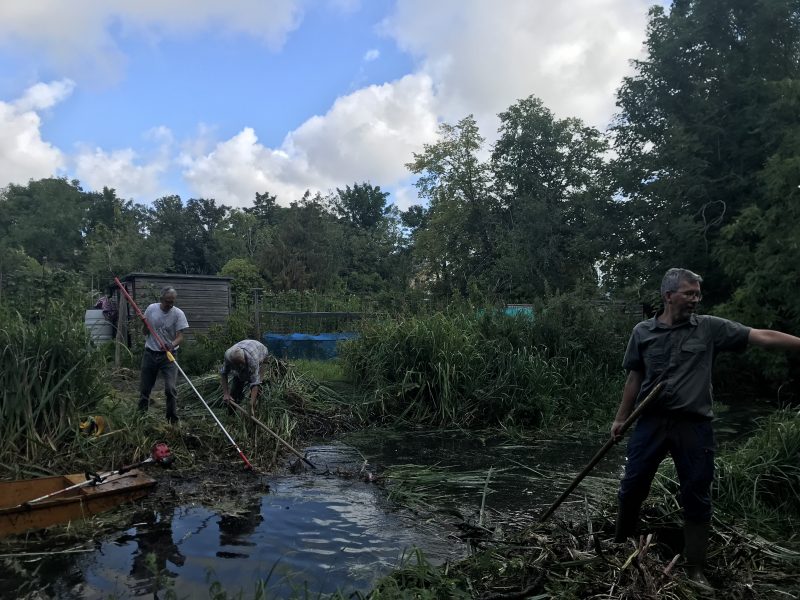
Clearing the leat at Flood Lane
The Westbrook Stream is starting to run freely. Its gravel bed is reappearing as areas of silt are washed away, and wildlife is returning – most glamorously a kingfisher whose gorgeous colours and antics delighted a miserably locked-down Faversham early this year. It is a chalk stream (a rarity in the world although not in Faversham), fed by chalk aquifers, meaning that its water is rich in minerals and varies little in temperature.

The famous kingfisher catches a fish in the Westbrook. Photo: Jacob McCormack
The continuing restoration and renaturalisation of Faversham’s most significant freshwater stream is the work of the marvellous Friends of the Westbrook and Stonebridge Pond (WASP), formed in 2013 following a call from the Medway Swale Estuary Partnership (MSEP) for community action to improve local streams. Before this entirely voluntary but doughty crew, took action, the stream had become little more than a ditch, choked with rubbish. Who of us then knew that this was a chalk stream of which there are fewer than 250 recorded in the world, and whose clear water was the very reason for Faversham’s existence?
Anna Stonor, a WASP founding member, says: ‘The Partnership helped us establish as a group and paid for an initial walk-over survey which informed the development of our management plan. They also enabled the Medway Valley Countryside Partnership to draw up a scheme for the restoration of the stream.’
Since then, WASP has become much more than just a stream-clearing operation, combining elements of ecology, conservation, archaeology and community, with a significant impact on Faversham’s future. Anna says: ‘Working with others in the group and beyond, we’re able to carry out surveys which have included aquatic invertebrates and fish, eels, butterflies, birds, plants and bats, and this really helps to inform our work.’
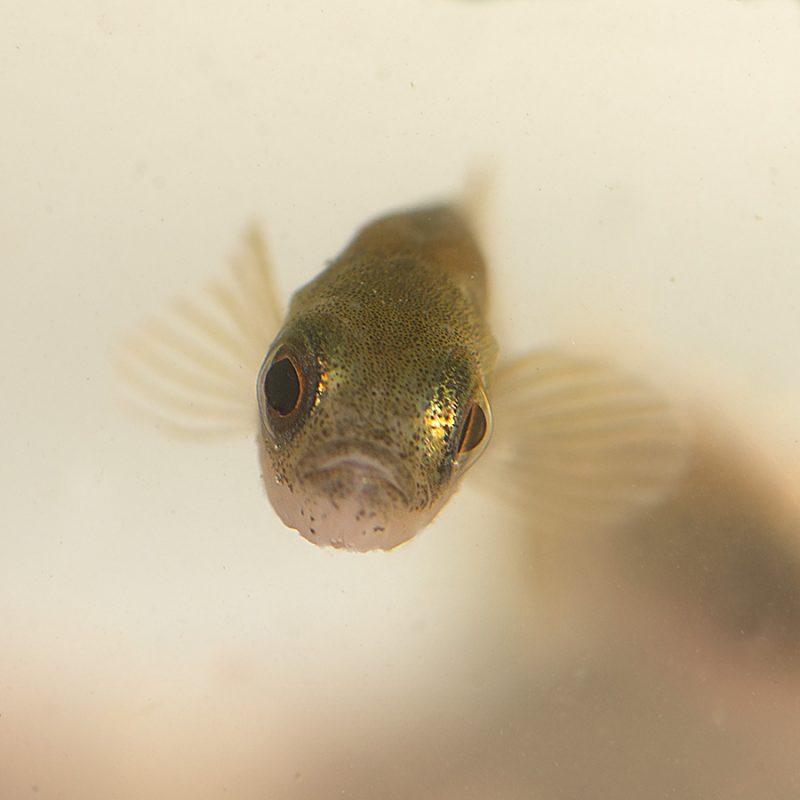
Stickleback photographed in the Westbrook. Photo: Bob Gomes
Anna shows Faversham Life the work that is being done using faggot bundles to renaturalise the Westbrook, creating more meanders and a narrower low-flow channel which is exposing the gravel bed under the silt. She says: ‘We’ve undertaken surveys showing the gravel sections of the stream have the most diversity of aquatic life.’ (Ecologist Bob Gomes has done much of the ecological work and surveys for the group, and his excellent photographs of acquatic wildlife in the stream can be seen here on the WASP website). Anna shows us an island which has been created in the stream by moving flag irises, encouraging a build up of watercress around it. This year, moorhens have built a nest safe from foxes.

Faggot bundles create a dynamic flow and create biodiversity in the stream
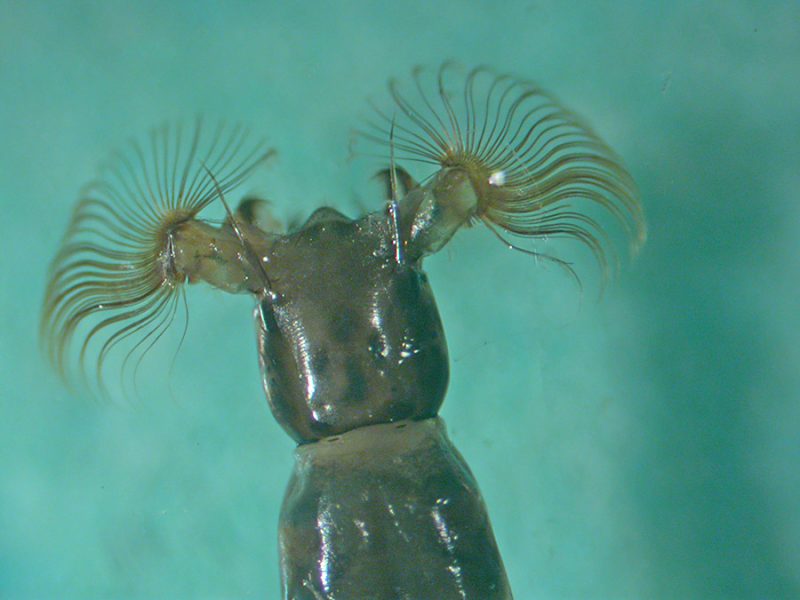
Simulium larva head, showing fans of bristles for catching food in the Westbrook Stream. Photo: Bob Gomes
To reach this point, the Friends have convened on the last Sunday morning of the month, winter and summer, to clear rubbish and vegetation clogging the stream. On the last Sunday of August, Faversham Life joined them. Sections of the leat which runs along Flood Lane were being cleared for the erection of gauge boards to record water depth. Among those variously armed with litterpickers, rakes and loppers, some in waders, but almost to a man spattered in black mud, were conservationists, archaeologists and ecologists. Anna says: ‘We are lucky as a group to have so many experts on hand, and people who know about community work and fundraising – and all of whom give their time so generously.’
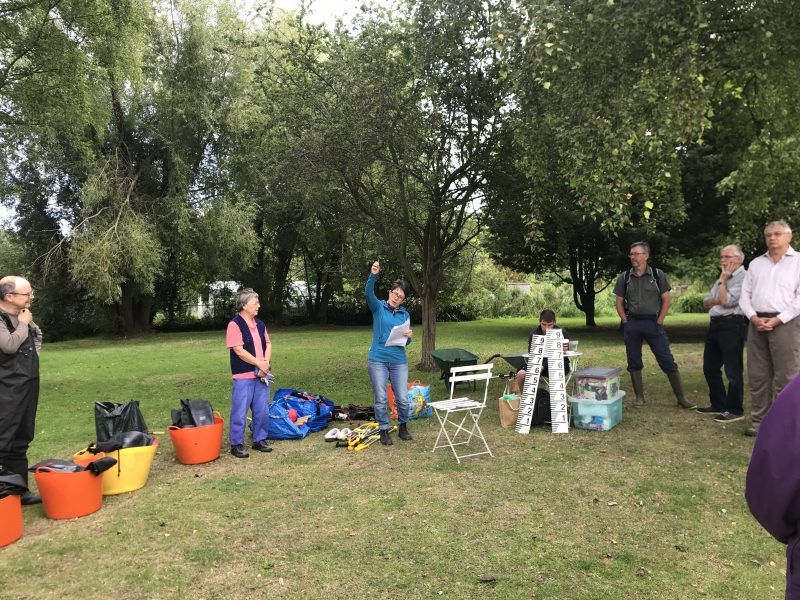
Anna Stonor rallies the work party
For two minutes, conservationist Matthew Hatchwell rested on the rake with which he had been hauling overgrown irises and watercress out of the Flood Lane leat, and told us that chalk streams such as the Westbrook have now been recognised as vital ecosystems by the Environment Agency. 85 per cent of the world’s chalk streams are in England and the Chalk Aquifer Alliance has been set up to coordinate restoration work across the UK. Faversham is rich in this rare habitat with its string of chalk aquifers. Matthew says: ‘Faversham’s Neighbourhood Plan is drawing particular attention to the springs at Cooksditch, Westbrook, Clapgate and School Farm.’
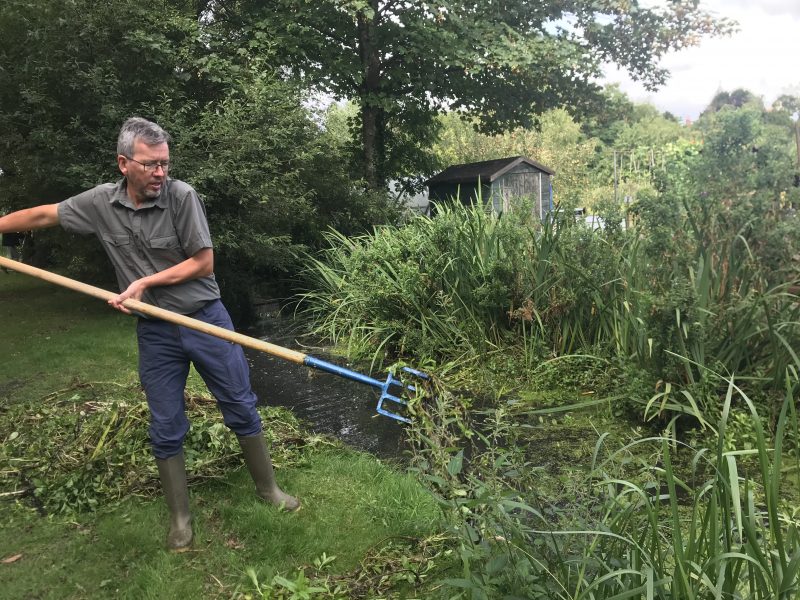
Conservationist, Matthew Hatchwell
Disembarking the punt from where they had been clearing low hanging branches, Caroline and John Clarkstone of the Faversham Society’s Archaeological Research Group, told us about the historical significance of the Westbrook: ‘It’s been used by man for the past 500 years at least, so it has never run a natural course.’ Maps of the 19th century, show large ponds all the way up to Ospringe, where the stream was dammed to give the water the power to run the mills. John gestures over to the allotments and says: ‘There was a mill there in Henry VIII’s time.’ He explains that the numerous water channels, or ‘leats’, that run through Stonebridge allotments, are the remains of the gunpowder industry, and that an explosion in the late 18th century was so devastating, it resulted in a parliamentary bill for compensation. Caroline says: ‘We’ve found evidence of neolithic man on its banks. Ancient man would definitely have known the Westbrook.’
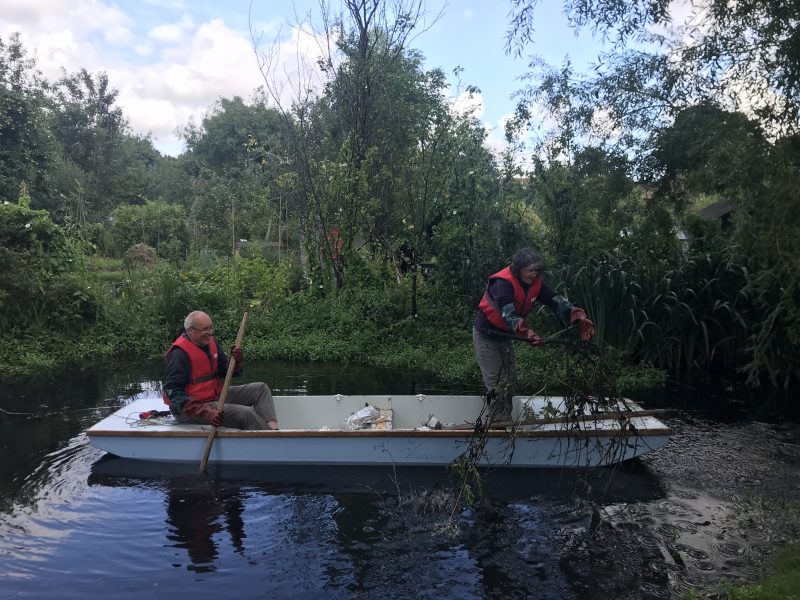
The Clarkstones: archaeologists and stream-clearers
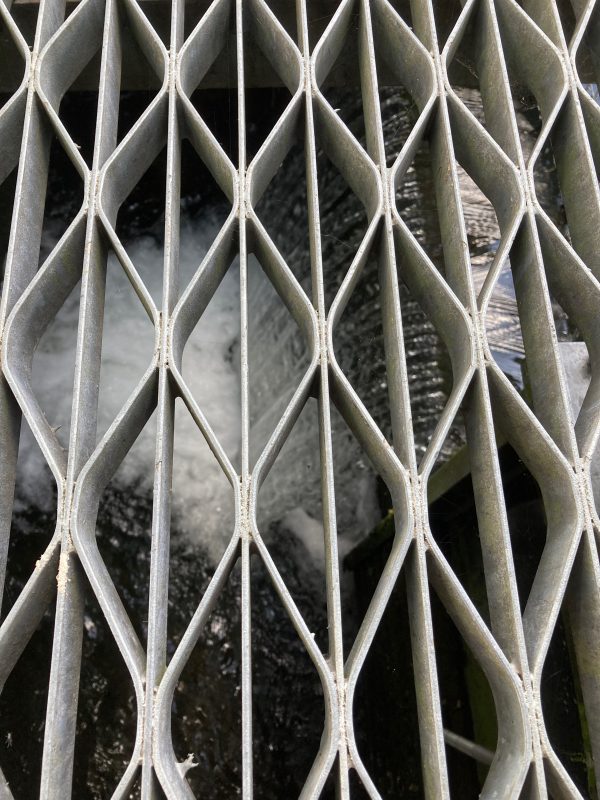
One of the two sluices in the Stonebridge allotments
Culverting and abstraction of water by pumping stations have contributed to the weakening flow of the Westbrook Stream since the 1930s. It used to rise in Painters Forstal and flow down Water Lane in Ospringe towards Chart Mills and on to Stonebridge Pond. At the foot of Lorendon Park, all that is left to remind us of this spring is the curious sight of a forlorn bridge standing in a dry field. Today, the most significant water feed is from the aquifers in the wet woodlands between The Knole and Hazebrouck Rd, which are privately owned. Anna says that this flow has been vastly strengthened by the work done by residents there clearing blocked water channels.
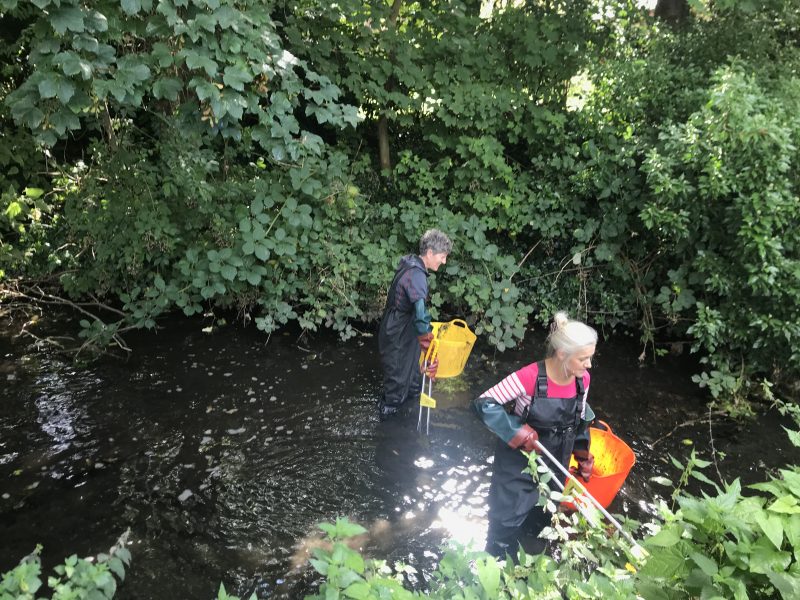
Friends of the Westbrook Stream litter picking
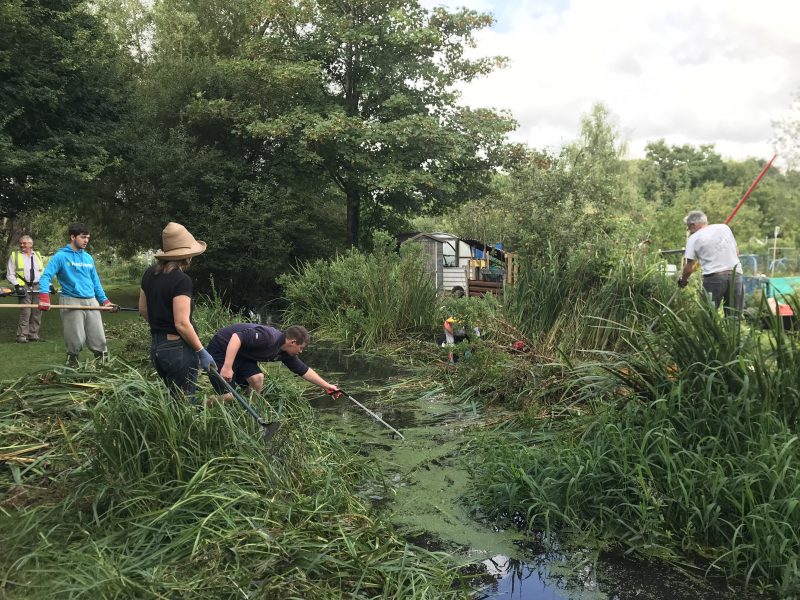
Volunteer Alexander Hatchwell, picking out litter
Collaboration and cooperation have become an increasingly important part of the work. Anna says: ‘We have very good relationships with Faversham Town Council, Swale Borough Council, Kent County Council, the Environment Agency (EA) and Lower Medway Drainage Board and other local groups. We attend regular MSEP meetings which are a great way to stay in touch with other organisations including the EA, the Water Companies, Kent Wildlife Trust and the RSPB.’
She says: ‘We also spend quite a bit of time these days taking part in consultations, such as the Swale Local Plan, the CaBA Chalk Stream Restoration Strategy, the Environment Agency’s Challenges and Choices Consultation, and lobby generally for more attention to be given to water quality and water resources and the benefits this can have to the environment and society – especially in the context of the climate and ecological emergency.’
WASP is always interested in hearing from residents about what has been sighted in and around the stream, and invites readers to come along to the AGM at the Guildhall on 23 September at 7.30.
Text: Posy. Photos: Minna Ford, Bob Gomes, Jacob McCormack
Friends of the Westbrook and Stonebridge Pond
You might also be interested in: